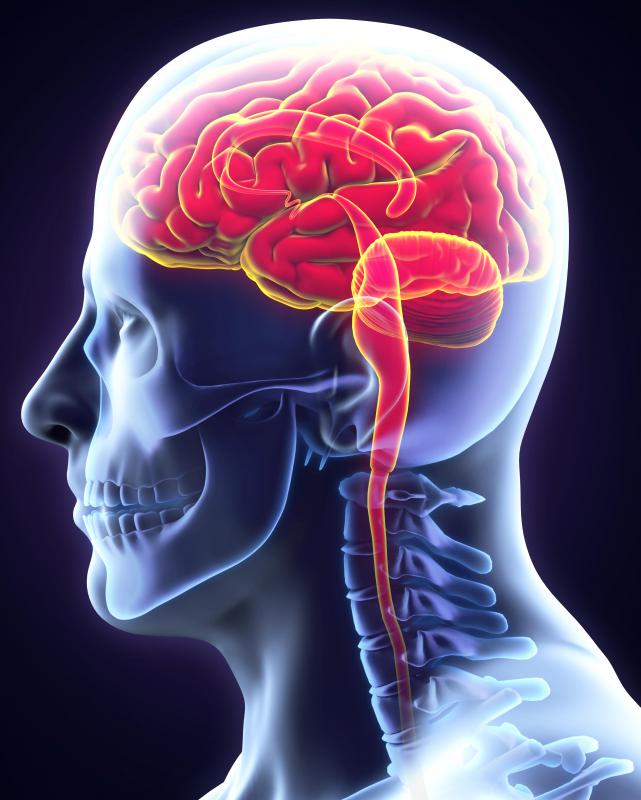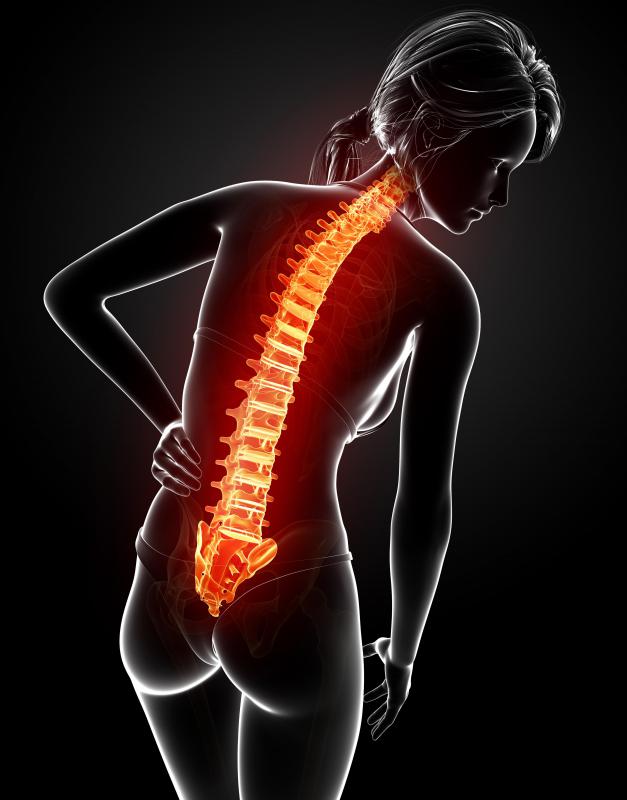At TheHealthBoard, we're committed to delivering accurate, trustworthy information. Our expert-authored content is rigorously fact-checked and sourced from credible authorities. Discover how we uphold the highest standards in providing you with reliable knowledge.
What is the Dorsal Column?
The dorsal column is a part of the spinal cord which is responsible for transporting sensory input from the body to the cerebral cortex. This part of the spinal cord is key in perceiving fine touch, such as that used to distinguish textures, along with vibration. The dorsal column also contributes to the body's system of proprioception, used to orient the body in space and to coordinate muscle movements, given information about the body's position.
Many people think of the spinal cord as a single entity. It is in fact a bundle of grey and white matter, with a number of connecting nerves, surrounded by several tough layers of material which are designed to protect it from harm. The spinal cord carries signals to and from the brain, which requires a lot of literal wiring to communicate with various parts of the body.

The name “dorsal column” actually provides some clues, for people who are familiar with medical terminology. “Dorsal” is a term which is used in anatomical positioning to refer to something at the back of the body, which means that this column is at the rear of the spinal cord. “Column” indicates that the structure is one of several columns located in the spinal cord.

A series of connections occur to get information from the body into the spinal cord. Numerous linked neurons pass along sensory information to the dorsal column, and the it includes several segments which end up in different areas of the brain. In someone with a healthy dorsal column, signals are routed to the brain in under a second, and the brain uses this information to make a variety of decisions, ranging from deciding that the hand is touching velvet to adjusting the muscles in the feet to compensate for rough terrain.

Damage to the dorsal column causes loss of sensation below the area of damage. Damage can occur as a result of lesions which appear in the case of some diseases which attack the central nervous system, and it may also be caused by trauma such as damage to the spine incurred in a car accident, or pressure exerted on the dorsal column by anatomical irregularities. A neurologist can use a series of tests to locate the site of the damage, using sensory stimulation to find out which level of the dorsal column has incurred an injury and spinal imaging to learn more about the injury. This examination can also reveal other forms of damage to the spinal cord and the bundles of fibers which carry information up and down the spine.
AS FEATURED ON:
AS FEATURED ON:















Discussion Comments
Yes, the dorsal column is extremely important to experiencing an optimal state of health. I had fibromyalgia and chronic fatigue syndrome for almost 7 years. For the first 14 months of my illness, I was bedridden. Towards the end of my illness, I noticed that I had lost a lot of control of my muscle movements and had very little awareness about my bodily posture.
I went to see a chiropractor and he told me that my dorsal column was severely out of alignment. After a series of sometimes very painful alignment treatments over the span of about six months, I have regained control of my muscle movements and am very aware of my posture.
I also make it a point to sit down properly and not lean back on my lower back so much, especially while surfing the Internet or watching TV. It's true, you do not know what you have until it is gone, and now that I know how important my dorsal column is, I do my best to respect it and make sure that I sit properly and get follow-up alignment treatments, when necessary.
Post your comments